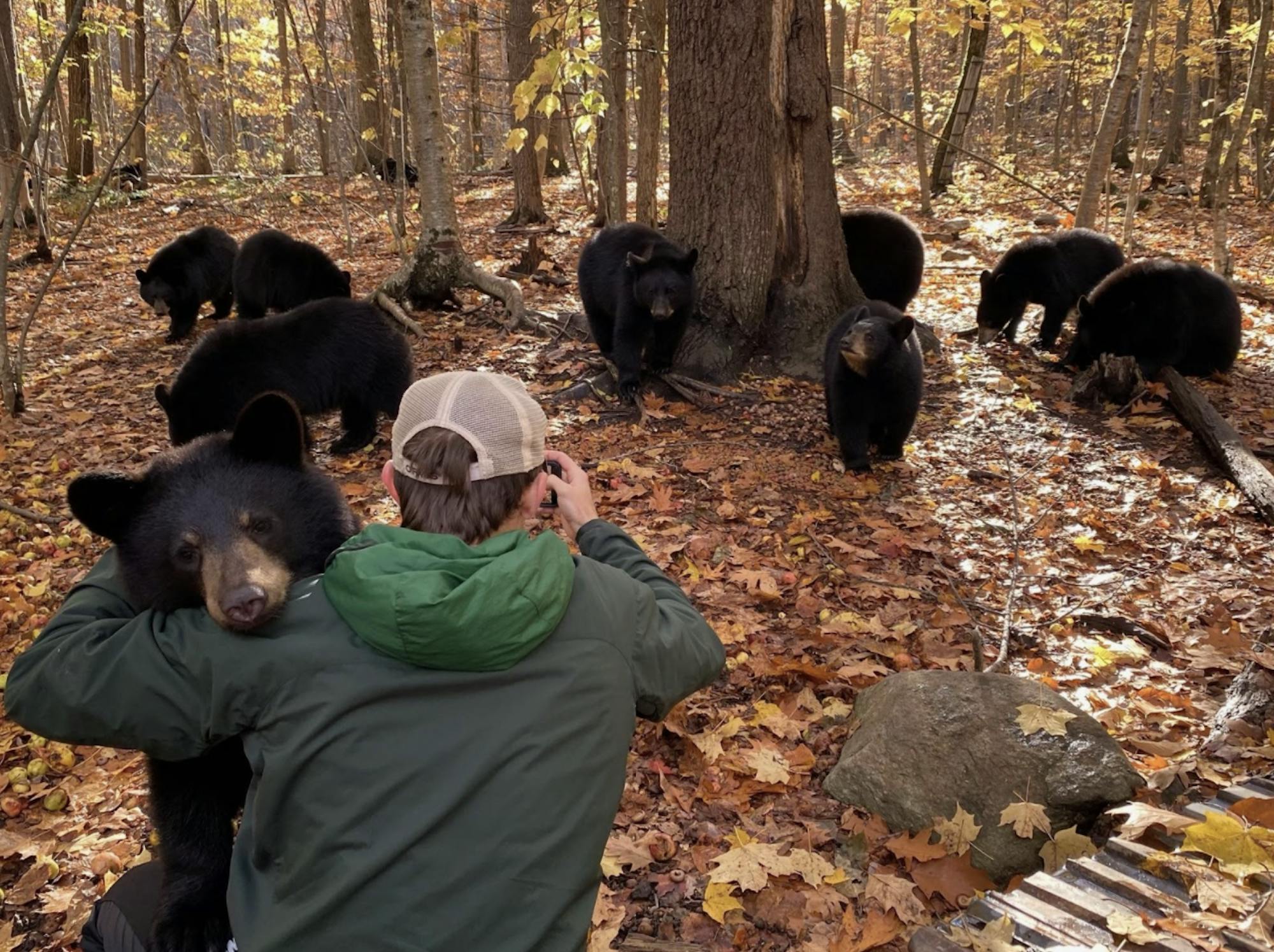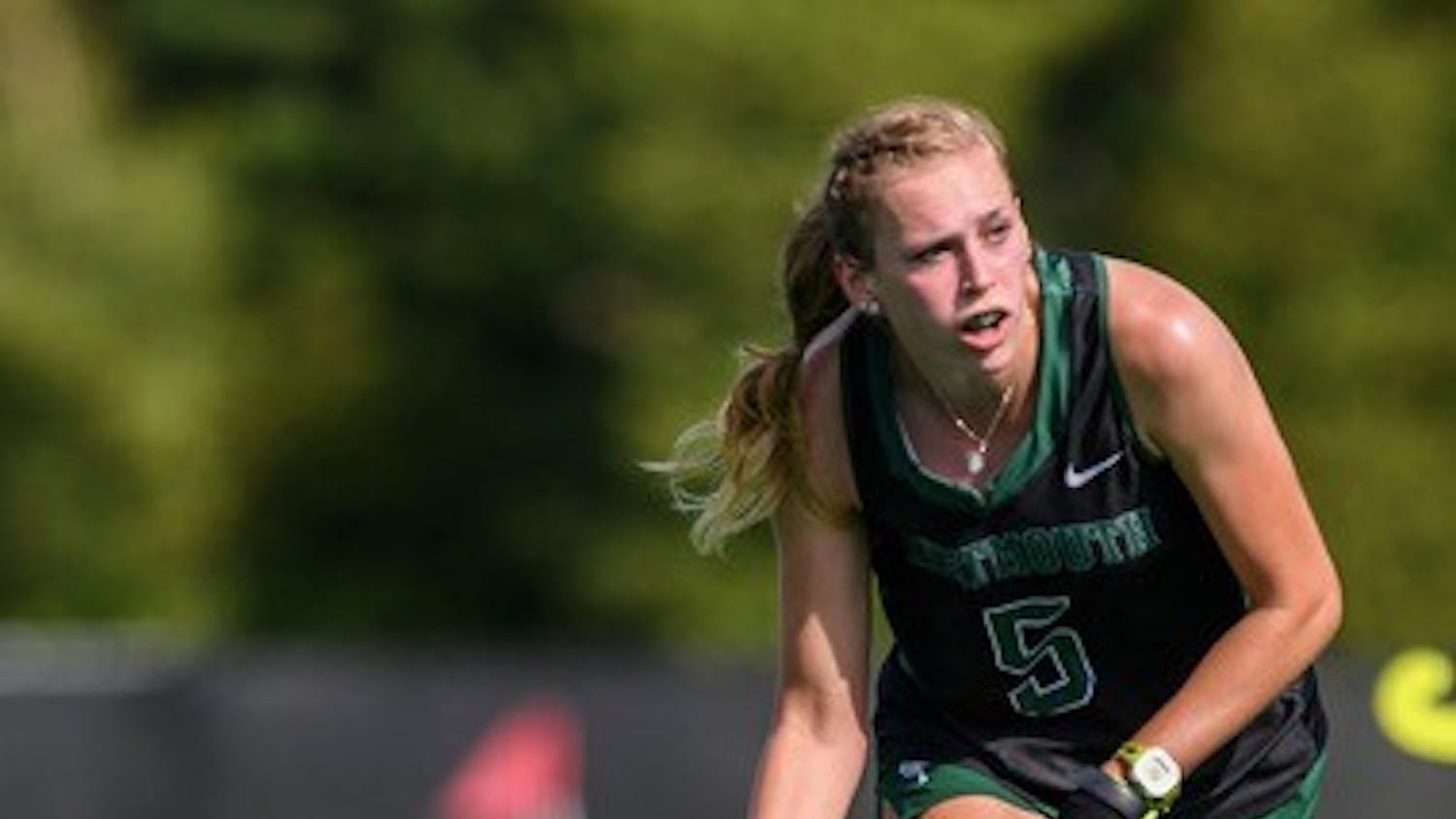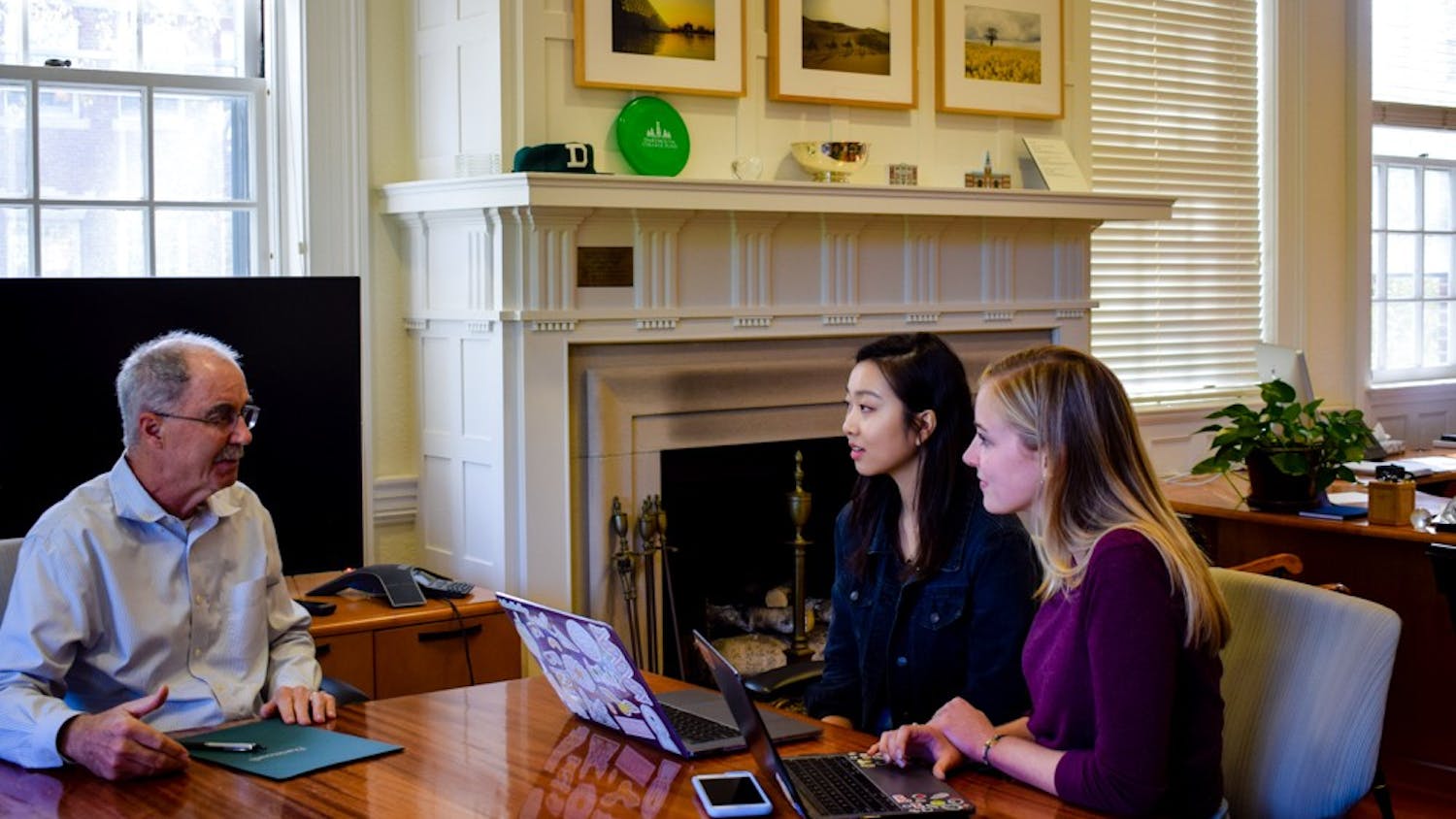Mike McGovern ’21 spent his fall term putting cameras in trees. More specifically, he put up huge DSLR cameras, a few assorted flashes and an infrared transmitter. With each beam break of the transmitter, the “photo trap” would catch about five photos of whatever crossed its path.
“This kid has a work ethic,” Henry Phipps ’21, a friend of McGovern, said. “I know he would go out multiple times a week to check these traps — all in the name of getting one or two perfect photos. That’s a level of craft I couldn’t even fathom in photography.”
This coming fall, McGovern will be working as an assistant to Steve Winter, a world renowned big cat photographer. Winter is also a National Geographic Explorer — the highest ranking title that a National Geographic photographer can earn. Last summer, when multiple black bears made an appearance in Hanover, McGovern gave Winter a call. Their subsequent story on the wildlife of New England — specifically black bears, lynx and bobcats in Maine, Vermont and New Hampshire — was just picked up by National Geographic.
McGovern is completing his National Geographic project as part of his research as both a Stamps Scholar, a grant that funds research during students’ junior and senior years, and as a Senior Fellow. McGovern is studying how media and ecotourism can promote big cat conservation in the U.S. and Asia — a project for which his work at National Geographic has played an essential role.
Edward Johnson ’21, a friend of McGovern, tagged along on some of McGovern’s trips.
“He flipped through the camera when we got there, and he knew pretty quickly whether or not animals had walked by the trap,” Johnson said. “But then bringing those SD cards back … you just are clicking through a bunch of pictures and it’s facing the wrong way, or it’s not totally focused. And then you click to the one where it’s looking at the camera in total focus; it’s just a fun moment.”
McGovern’s fall adventures are just the latest step in a lifetime of travel. McGovern has visited over 100 countries and set foot on all seven continents. He’s stood in the presence of numerous apex predators in their natural habitats — from lions and tigers to sharks and grizzly bears. He’s photographed seagulls on floating ice in Svalbard, the windswept peaks of Denali National Park, sea lions in the Galapagos and the horses native to the South Korean island of Jeju — to name just a few.
McGovern’s passion for photography began early in life. His mother is an attorney who works on conservation projects around the world. She would often take him along.
“This is going to sound so silly,” McGovern said, “but as a kid I was really into Pokémon. And I always had this funny idea that traveling around the world taking pictures of different animals was very similar to this childhood idea I loved so much of traveling around the little Pokémon world catching different Pokémon.”
In 2016, a crew that McGovern’s mother knew began shooting a film called “The Hidden Tiger,” which would focus on the U.S.’s large captive tiger population — which is larger than the world’s wild tiger population.
“I’d never heard anything about that,” McGovern said. “I knew tigers were cool, so I started working with them.”
By McGovern’s senior year of high school, the film crew had enough backing to take their operation to India — home to the world’s largest wild tiger population.
One moment in particular remains fresh in McGovern’s mind. The film crew was out on a ridge after failing to follow a tigress named Arrowhead through the forest.
“And then out of nowhere … the tiger jumps up onto the same rocky outcrop as us — like 20 feet away from us,” McGovern said.
No one was carrying a weapon. Arrowhead stopped and stared at the film crew. They stared back. Then she walked toward them, passed the Jeep on McGovern’s side and walked off into the forest.
“There’s nothing like being in the presence of a tiger,” McGovern said. “I’ve been with every other apex predator in the world almost, but there’s something about tigers that’s just hard to put into words — [this] combination of just complete, stealth and power and regal prowess.”
When Arrowhead appeared, McGovern immediately began snapping photos. One was picked up by NatGeoWild’s Instagram, McGovern’s first recognition by National Geographic.
“He was the only one that managed to get the spectacular photo without the backlighting from the ridge coming in,” Phipps said. “And that was a pretty striking story for me — I love imagining he’s the youngest there probably by a longshot, and he had chosen to get a new, fresh angle — in a literal and a figurative way.”
The Arrowhead image has even earned a place on Johnson’s desktop.
“Anyone can take a photo of an animal, but he tries to capture the look, the stare, just the stance in a way that portrays an emotion, and I think that’s what makes some of his work really powerful to me,” Johnson said.
When McGovern arrived at Dartmouth after his trip to India, his academic passion for tigers took off. His freshman winter, McGovern took ENVS 2, “Introduction to Environmental Science,” with professor Ross Jones, who would later become his academic adviser.
“That was a big class — we had over 60 people,” Jones said. “But [McGovern] stood out.”
For McGovern’s final project in the course, he decided to track tiger populations in Sumatra, Indonesia. McGovern also completed a presidential scholar research project on tiger tourism in Sumatra and an independent study with Jones on international tiger law. That academic background became the framework for his Stamps Scholars project and senior fellowship, a passion which he hopes to pursue after graduation.
McGovern was recently accepted to Oxford University’s masters program in biodiversity, conservation and management. He said he is interested in a career in wildlife conservation policy — specifically how megafauna conservation interacts with economic development in low-income communities.
McGovern plans to defer attending Oxford for a few years as he pursues his work with National Geographic. In addition to the New England wildlife story, McGovern was also chosen to accompany Winter on a future trip to India’s Gir National Park to photograph the last Asiatic lion population. McGovern and Winter are also collaborating on a larger project — Big Cat Voices — a media campaign where National Geographic photographers share stories about big cats on one platform.
“Media is really the key component ... in saving a lot of these animals, whether they’re the tigers that are in captivity in the U.S. or a tiger in the wild in India,” McGovern said. “Media is the key because it gives the power back to the people. … I think it’s important for people to realize that you can make a difference, regardless of where you are.”




